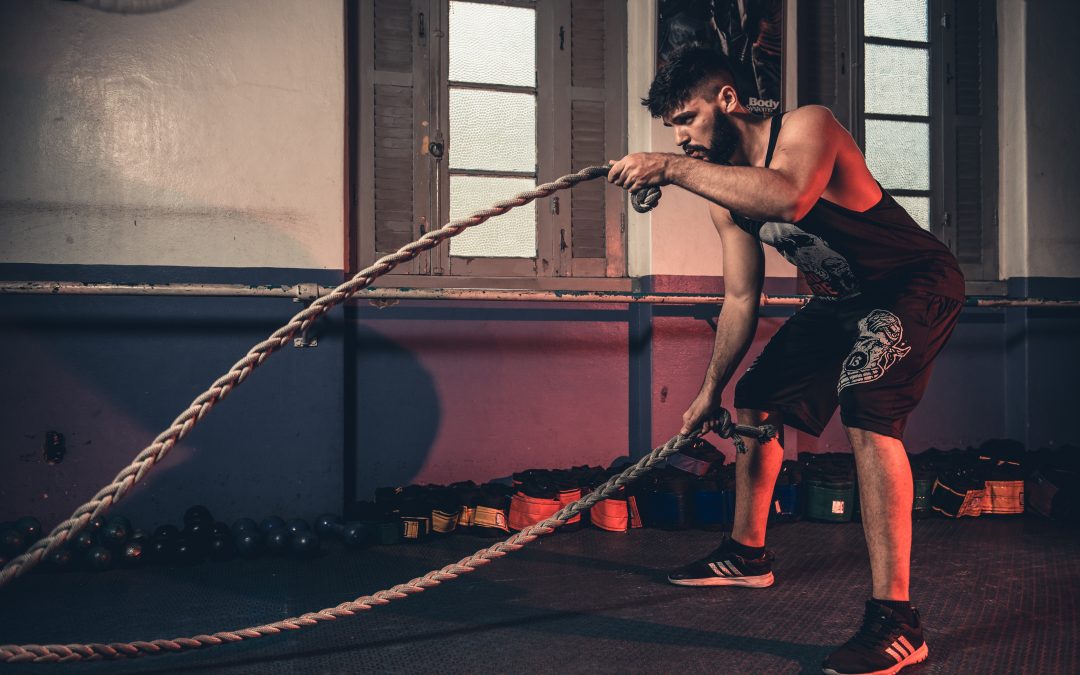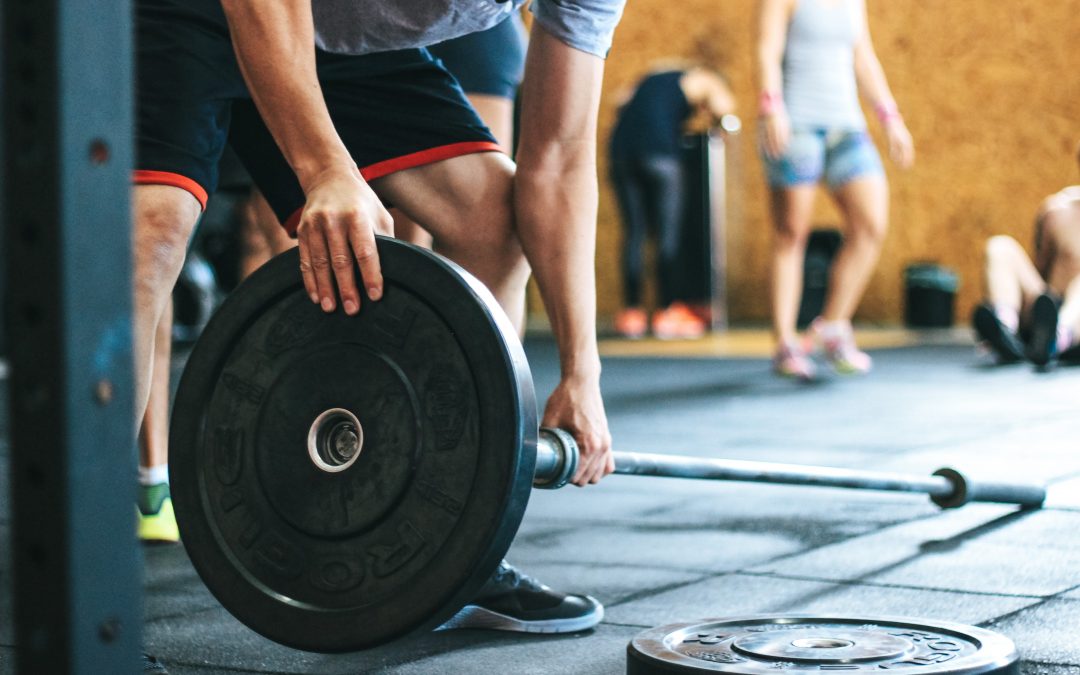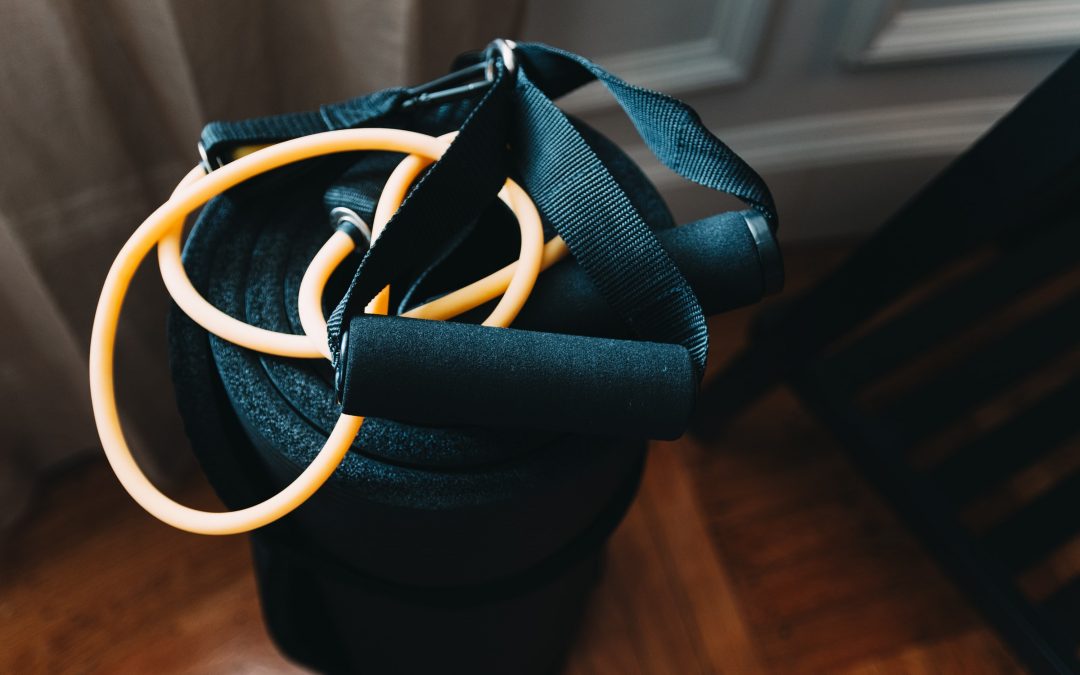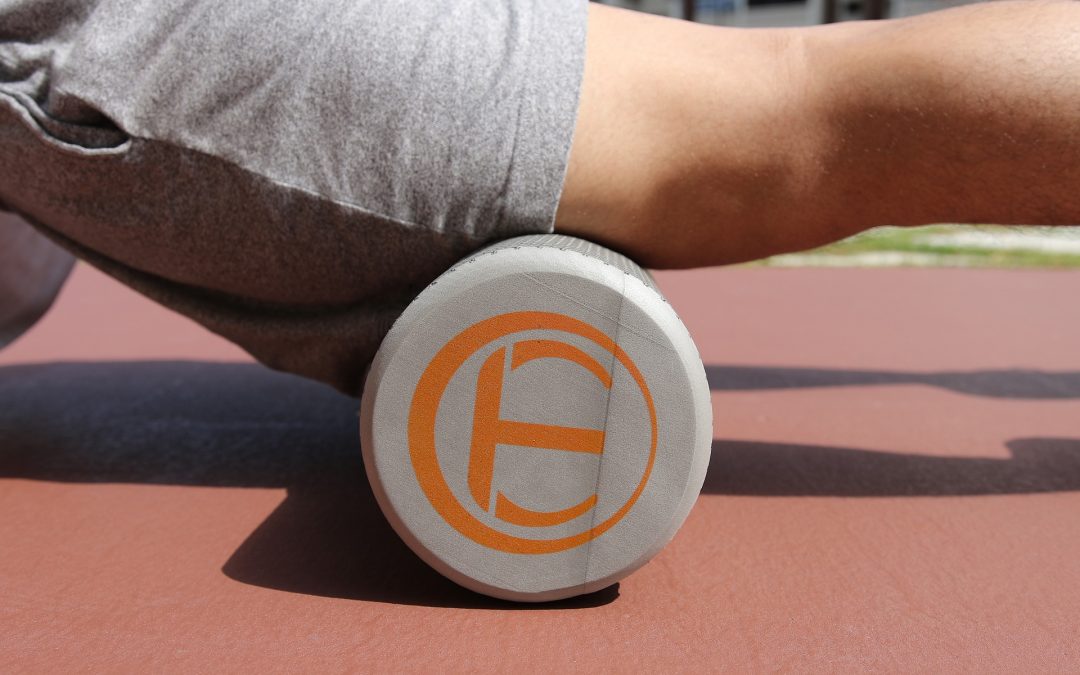
How does exercise improve mental health?
The link between exercise and mental health
When you’re having a down day, sometimes that’s all it is. But it isn’t uncommon for that one down day to extend to a week, or a month, or even a year, until it feels never-ending. Whether or not you’ve been diagnosed with depression or other mental health issues, exercise is likely to do you some good.
Although it could be the last thing on your mind when you’re wracked with anxiety or depression, exercise can not only benefit you physically but mentally as well. Studies have shown that the psychological effects of physical activity are not to be ignored.
Exercise releases endorphins and other brain chemicals
Exercise is especially helpful for people suffering from depression and anxiety. Depression is a common mood disorder that negatively affects people’s daily lives, causing them to feel deep sadness or apathy. Anxiety, on the other hand, is defined by feelings of tension. When these feelings are constantly felt at high levels, it could be diagnosed as a medical disorder. Anxiety can be caused by environmental factors, but it can also be caused by genetics, medical issues, and brain chemistry.
Exercise is known as a mood-booster because physical activity triggers the brain’s release of endorphins, the feel-good chemical that isn’t too different from cannabis. When you exercise, you could experience “runner’s high,” the rush of endorphins after physical activity. These neurotransmitters can enhance your sense of well-being by reducing pain, relieving stress, and causing you to feel happier. The promise of endorphins during exercise causes many doctors to recommend that their patients try exercising before turning to pills.
However, endorphins aren’t the only neurotransmitters you should thank for the boost in your mood. Exercise triggers the release of serotonin, which can improve your sleep cycle and increase your appetite. Physical activity also allows for an increase in dopamine, the neurotransmitter that affects how we feel pleasure. Stress hormones such as norepinephrine and adrenaline could likewise be released in response to regular exercise, contributing to one’s fight-or-flight response. This can help you keep your focus.
Exercise can distract you
It can be quite difficult to pay attention to something other than one’s negative thoughts when battling mental health issues. While exercising, the physical activity can help you keep focused on your movements rather than your worries. Negative thoughts only feed the depression and anxiety you may be experiencing.
Before you exercise, make a list of goals you want to reach in the gym. Would you like to be able to do ten push-ups non-stop by the end of the month? Are you aiming for a beach-ready body by the summer? Having your goals in mind while working out will help you concentrate on improving your body and how you feel in it. Crossing your goals off your list once you’ve accomplished them will no doubt make you feel more confident and in control of your life. Being fit could also increase your self-esteem, especially when you see yourself in the mirror!
Exercise can get you out there
Of course, you could always choose to work out on a yoga mat in your living room or with your earphones on in the gym, but even taking a daily run outside or an exercise class could give you the chance to interact with others. Greet joggers that run into you at the same time every day, thank people who help you with your weights at the gym, or make friends with the people you do pilates with every week.
It’s tempting to drown oneself in alcohol and binge-watch TV shows on bad days. Exercising is a healthy, positive activity that can feel easier to do when you surround yourself with others who do it, too. Allow the people you see and meet to motivate and inspire you to keep exercising.
Exercise can help you sleep
Mental health issues often get in the way of the body’s sleep cycle. When serotonin is released as a result of physical activity, the serotonin can build up in certain areas of the brain, triggering sleep. Low serotonin levels contribute to less non-REM (rapid eye movement) sleep. Non-REM sleep allows the body to build muscle, strengthen the immune system, build bone, and repair tissue. Your body also needs serotonin to synthesize the hormone melatonin, which plays an important role in the body’s sleep-wake cycle. Exercise is also used as a way to regulate the body’s circadian rhythm, which can make you feel more sleepy or awake.
Exercise can boost brainpower
Be prepared to improve more than your mood when you hit the gym. According to Walden University, exercise has been found to not only strengthen memory but build intelligence. When humans and mice did cardiovascular exercise, scientists discovered that their brains participated in neurogenesis, the production of new brain cells. This process improved the subjects’ brain performance by strengthening the hippocampus, a complex structure in the brain’s temporal lobe, is in charge of memory and learning. The researchers concluded that physical activity prevents memory loss and cognitive decline.
This is one reason the elderly are advised to exercise. More and more people are experiencing dementia, defined by the Mental Health Foundation as a decline in mental ability affecting thinking, concentration, problem-solving, and memory. It occurs due to the death or damage of brain cells, leading to diseases such as Alzheimer’s. Even people who have not been diagnosed with dementia experience problems with concentration due to their old age. Adults who exercise daily have a 20-30% lower risk of depression and dementia, proving that physical activity plays a role in the reduction of likelihood of cognitive decline.
Taking the first step
Exercise is by no means an overnight cure for what you’re feeling, but it can definitely help you over time. Psychology Today magazine recommends exercising three or more times a week for 45-60 minutes each time to help in the treatment of even chronic depression. This type of routine can reportedly show positive results after four weeks. However, the Mayo Clinic states that even regular walking could improve mood.

How Battle Ropes Work
We’ve heard of weights, bands and even tape that are commonly used in fitness routines. Now it’s time for the ropes. You’ve probably seen ropes being used for cardio in gyms thinking, “What the heck are they doing?” Well, battle ropes used in training have been around for longer than you think.
Battle ropes were introduced into fitness routines as early as 2010. They were called “power ropes” and “battling rope systems” developed by John Brookfield. These are weighted ropes that usually weigh 24 pounds. In his interviews, John Brookfield had mentioned that he came up with the system in his own backyard. He had been looking for ways to train for speed, power, strength, and even mental endurance in the long run. After training for a whole year, he says the results were phenomenal and had started teaching it as well. He concluded that this training was quite adaptable and transferrable to other fields of training, such as athletic and military training.
While constantly being compared to kettlebells, Brookfield claims that these are two very different types of training. Comparing it to a body of water, with fast-flowing current, there is no stop, no lull. The body is simultaneously present with the mind, working at all times. This causes velocity, which is a combination of speed and strength. Using kettlebells or any kind of free weight, there is a “rest” period in between reps where you allow your mind and body to relax for a couple of seconds before the next rep, while ropes keep your mind and body engaged the entire time you do training which results in maximum output.
So, using a rope and getting fit, sounds easy right? Not even close. The system actually teaches users how to increase endurance overtime. This is done through using the ropes at only seconds at a time at intervals. 20-30-40 intervals are used most of the time and for about 10-20 minutes, depending on how much the user can endure. Being able to sustain eventually helps users to be able to effectively execute and excel in their field of choice.
John started training with military personnel during his first times sharing this drill with others. Being friends with commanders, they let him test this drill with some of their men. After his training had reached numerous amounts of people, John noticed that these people, no matter how able and well-trained they had been, were struggling until the last minutes of the drill! Other athletes including NFL and Olympic competitors had also experienced this. This is because many workouts and training focus on either strength or speed, never the same of it together – velocity. When training to produce velocity, any training that comes after won’t necessarily be easy but range of motions can be found to be less difficult to execute.
Velocity also helps with a better blood flow and overall circulation in comparison to other types of training. John also compares the blood flow to a body of water, like a river. Such bodies of water allow the pushing out of debris, whereas slow-moving bodies of water make for a build up of it. The bloodstream, in general, is a slow-moving fluid because of its density. This can result in the build up of lactic acid. Velocity, increasing the circulation, potentially moves the debris. This counters the build up. As a result, studies prove that muscles do not fatigue as much.
Another thing this system teaches is the effectiveness of correct breathing. According to Brookfield, many people that do training (even athletes) get into something called panic breathing. John says that we can first learn to condition our minds to let our bodies relax when undergoing stress, and soon after it will transfer to all aspects in our lives, be it work stress, emotional stress or even physical stress. It is still possible to relax even if our bodies are undergoing extreme stress by changing our breathing.
Battle ropes target many parts of the body at once with a couple of different moves as they also enhance your grip, strength, and overall work capacity. A 10-minute workout can actually get your heart rate to peak, which makes it classify as a high-intensity workout, and can be good for cardio. The high heart-rate can really aid in weight loss. The benefits of using this drill include:
- They are perfect for high-intensity interval training (HIIT) which are proven to improve the metabolism even after workouts! These are usually shorter routines but the range of motions have to be executed a peak intensity. These can also burn an estimated 300-500 calories per half hour. This can help your metabolism to be up until 36 hours after a workout! You’ll be burning calories even while sleeping and doing your daily activities even by sitting at your desk the next morning.
- They are short, non-time consuming and still effective. According to studies, 3 sets of an HIIT battle rope routine only takes 10 minutes but the calories burned are equivalent to jogging for 45 minutes! Perfect for those with busier schedules.
- Building muscle, burning fat. Using battle ropes hits two birds with one stone, using half the time and less the equipment and make for a full body workout, too. They target many parts of the body at one time.
- Adaptive to fitness levels, you can work your way from the bottom to the top. As you get more used to them, you can add more challenging moves and alter the duration and number of sets you execute. You can also increase the weights and lengths of the ropes you use.
It is suggested to do 4 exercises with minimal rest in between. Something else to remember is that no one has the same amount of strength, endurance or dexterity on either arms. One arm’s strength is another arm’s speed. Doing this routine consistently will help improve the weaknesses found in both arms, making them almost equal. Integrating this type of drill into your routine is a sure fire way to reach your goals and even strengthen you to be able to perform other routines accurately and with ease.

Should I train at home or at a gym?
It’s easier now more than ever to sign up for a gym membership and make a promise to oneself to be fit. However, it’s just as easy to ignore the fees that come with the membership and lie in comfort at home instead. Training at home would be much more convenient, but would also be prone to delay thanks to distractions.
Both the home and the gym have pros and cons you might want to consider before investing in your own exercise equipment or putting a down payment on a new membership. However, you’ll first have to figure out what kind of bodybuilder you are.
Are you an experienced bodybuilder whose exercises depend mostly on heavy weights? Or did you just start following a fitness YouTuber and hope to make exercise a habit, even for just a few minutes each day? Here are the benefits and drawbacks of training at home and at a gym, so that you can decide which option suits you best.
Why you should train at a gym
Gyms have endless facilities. They have a machine for every muscle and a weight for every type of bodybuilder. If you’re into cardio, you’ll likely be able to use your gym’s treadmill, rowing machine, stationary bike, or stairclimber. If you want to build muscle, you can pick up any of their free weights or bands. Some gyms even offer products like protein shakes and amenities like saunas. Since buying expensive dumbbells just isn’t an option for many, a gym membership is the most cost-effective way to achieve overall fitness.
Gyms have trainers. If you’re not sure exactly what you should be doing or are too tired to push yourself to finish a routine, you can join a class with a trainer to lead you and others just like you. If you want a more personal fitness journey, avail of a personal trainer who can teach you how to exercise and keep you on track. Of course, the internet is overflowing with workout resources you could use on your own, but it’s still a whole different experience compared to having someone show you the ropes, step by step.
Gyms are filled with people who will motivate you. While membership fees should be enough to encourage you to make the most of your gym, the people you see exercising alongside you might just give you the boost you need to keep going. They might even help you if you need a hand with a barbell. If none of them seem friendly, there’s nothing wrong with a little bit of competition as motivation.
Gyms will keep you focused. There’s only one reason you’d be at a gym: to exercise. At the gym, there are no interruptions or distractions. Your concentration would be at its maximum, with nothing keeping your eye away from the prize.
Why you might not want to
Gyms can be expensive. There are high-end gyms and smaller gyms. Whichever you choose, you’ll still have to pay a fee every month, and usually for a contract period of a year. Sometimes, it just isn’t affordable.
Going to the gym can be a hassle. Going to the gym means having to pack for the gym, get clothed for the gym, travel to the gym, and work out then shower at the gym, before having to travel back home. It’s a longer process than one might think, and can definitely be a demotivator.
Gyms might not be all that clean. According to the Washington Post, some bacteria thrive in areas that are warm, moist, and nutrient-plenty. Since these bacteria can also withstand “high saline environments” or places with perspiration, gyms are the perfect place for germs to spread.
Why you should train at home
It’s less expensive. Purchase an exercise ball and a yoga mat and you’re all set to exercise! If you intend to do only body weight exercises, you won’t need any equipment at all. Harvard Health Publishing of Harvard Medical School states that the human body offers “the cheapest equipment available” for exercising.
It’s convenient. There are no rules to follow, which means your gym is open whenever you want it to be, whether that’s early in the morning in your undies or late at night with your dog to keep you company.
It’s yours. Your training routine is beholden to whatever you feel like doing that specific day. You could work out at home, choose to take a run around your village, watch an old exercise videotape, or lift some weights while watching a movie. Best of all, you could do all of this without the fear of anyone judging you.
Why you might not want to
Home offers distractions. There’s always extra work to finish, clothes to fold, or dishes to wash—the list would probably never end. On top of that, your bed will likely just be in the next room, only adding to the list of things tempting you away from finishing your daily workout.
You might lack equipment. Not everyone can afford a home gym, complete with a treadmill and full dumbbell set. If you aren’t creative with your exercises, you might find that your workout programs will be severely limited.
You might lose motivation. Unless you have a relative or friend exercising with you at home, the lack of a workout companion might leave you feeling lonely. Not only will you not have anyone to compare progress with, but you won’t have anyone to act as a spotter when you’re lifting something heavy.
So, which is better?
It all depends on which kind of environment you prefer. If you don’t have much of a budget and have the determination to see your fitness goals through, training at home may just be the right choice. If you’re after the experience of training at a gym, and would prefer guidance and better equipment, a gym membership would be a wise investment. Still, others set aside time to train both at home and at the gym, enjoying a balance between the two.

Are resistance bands effective?
Strength training can still be made easy even if you don’t have the complete equipment at home! Resistance bands are great additions to fitness routines, especially for people on the go. They are easy to bring around and make for a more effective workout. Resistance bands come in a variety of colors, lengths, strengths, and types, making them fit for anyone at any fitness level. They bring a good challenge to your workout and help build muscle strength.
Originally, resistance bands were used to help rehabilitate and improve injuries so they are commonly found in physiotherapy clinics and nursing homes. Recently though, fitness experts have also recognized they’re advantageous to the average workout. As they are flexible, they can be used for a myriad of different exercises. Your regular workout at home can become too easy in the long run, so adding these bands are a fun twist to challenge yourself!
Bands are usually color-coordinated according to their tension levels and come in different kinds which have slightly different purposes:
- Mini Bands
These are small, thin, wide bands that make continuous loops, perfect for lateral movements. They can help both the upper and lower body by placing them around the knees, ankles and even arms. These can also help with stability/balance and engage and activate the core. They are best for getting extra tension and strengthening the lower body (e.g. doing exercises like squats, lunges and even kickbacks).
- Tube Resistance Bands
These are more cylindrical bands that usually have handles attached to either end. They are made to mimic weights and some machines at the gym, essentially targeting the upper body. Great for presses, curls, and other exercises that involve pressing or pulling.
- Light Therapy Bands
These are lighter and thin bands that are longer in appearance and can be used more for therapy as they have less tension and low impact. These are more effective to use while doing the likes of Pilates and are good for muscle toning or warming up and stretching.
Advantages
- Resistance bands act like machines or weights in which they cause your muscles to work against the tension. This can be great for strengthening not only muscles but also your joints, bones, and tissues which in turn can prevent bone injuries and diseases such as osteoporosis and osteoarthritis.
- Resistance bands also cost less, so if you’re not already enrolled in a gym membership or do not have equipment that you can use at home, resistance bands are the key to getting in the effective workout with less the cost and hassle. You’ll also need less space, as resistance bands rely fully on your body weight.
- For the beginner, resistance bands come in different levels of heaviness. They usually come in sets of 3, light, medium and heavy. Starting out, you can use the lightest resistance band and gradually build up your resistance. When you’ve become accustomed to them and they start to feel too easy, you can start using the bands with heavier resistance. You can also combine different resistance bands, increasing the challenge without the strain that can potentially come from free weights. You get the same muscle activity with less risk of injury!
- Resistance bands can be added to your usual workout routine by modifying these familiar moves. Put resistance loop bands around your ankles and walk from side-to-side, or around your quads while doing exercises like squats or lunges, lateral walks or even jumping jacks with the bands around the ankle.
- Instead of relying heavily on gravity, your body is working against the weight of the band. This also means that in order to keep the band around you, your muscles are constantly working to 1.) hold the band up and 2.) defy the tension the band is giving. You can already feel the burn while you’re only holding up the position of the exercise, such as glute bridges which sound fairly easy, but not with the bands!
- With the versatility in bands, the possibilities are endless. Use them for a great warm-up by doing stretches with the bands, which help with stability. Warm-ups are already a must before workouts, but using bands can really help target weaker areas in your body that you may not know are causing other parts to compensate which can cause strains or injuries. For those that are planning on doing heavy lifting, bands can also be used to stabilize the shoulders to prepare it for a heavier free weight.
- They work areas that aren’t always targeted by exercises using weights or machines like the gluteus medius.
- You can work out your whole body and not just one area. You can work on another area while the other is recovering, and at the same time be doing moves that are working multiple parts of the body. The range of movements does also keep your heart rate up which is good for any exercise regimen.
- Resistance bands are lightweight and take up little to no space. This means you can bring them with you anywhere and use them anywhere. This is very convenient in contrast to lugging around a couple of dumbbells everywhere.
- They can correct the areas that you use to compensate, improving your overall workout because you do the range of motions working the muscles they’re supposed to instead of the ones that you use to compensate.
Safe to say that resistance bands can benefit you in a multitude of ways. As you use them, you start to see and reap the benefits, which turns workouts into something you look forward to doing.

What is the best way to use a foam roller?
What exactly is a foam roller?
A foam roller is usually a long, cylindrical device made up of foam that is used for fitness routines, physical therapy and even massages. They come in a variety of many different colors, shapes, textures and lengths. Some types are recommended for certain uses and purposes more than others as the make of these rollers are targeted for certain areas of the body or certain exercises.
What do they do?
Foam rollers have a multitude of benefits and uses, many fitness enthusiasts and even athletes swear by them. Foam rolling may look simple and easy as it is a self-manual therapy technique often used to release trigger points, improve flexibility, and even help injured muscles heal or reducing the delayed onset muscle soreness commonly known as DOMS. These rollers are mainly used in the process of rolling out tight muscles and relieving tension, which can feel very good if muscles are tight and need a good stretch.
MASSAGE
Using a foam roller to self-soothe and stretch is a popular exercise. It helps to relieve the fascia. Fascia literally means “band” in Latin and is mostly made up of collagen. It is a connective tissue that keeps the body together. Fascia can sometimes found to be tight, restrictive and adhesive. This is caused by a myriad of things like our poor lifestyle choices, bad posture, and also overworking our bodies causing strain or even injury to our muscles. Foam rollers are said to be a myofascial release, and rightfully so. They work hand-in-hand with nervous systems to tell your muscles to loosen up.
Foam rolling is a great way to identify which part exactly is tight and tense. It is suggested to work on the problem area for approximately thirty to sixty seconds until the pain or tension goes away. This will allow you to be more flexible and able-bodied to do more exercises and range of motions, keeping you recovered and ready for the next time you workout!
EXERCISE
Foam rollers can also be used for fitness routines, more commonly in Pilates or yoga. Rollers can be used to maintain balance or challenge it, adding instability to the routine to really push your body. Again, they can also be used for pre and post workout stretches and bending motions. Most of the time, rollers are used for strengthening and stretching the lower body, particularly the hamstrings, calves and even glutes.
Some examples of great exercises that you can use a foam roller with:
- Quad Roll
This is great for those with a more sedentary lifestyle. Foam roller is placed underneath the quads while you lie on it in plank position, rolling the foam roller until the upper part of the knee, and back against the hip flexors. Hitting trigger points should have you stay there for at least 30 seconds to release any tension.
- Glutes Roll
Done essentially by sitting on the foam roller, bending the knees, and with one leg crossed over the opposite knee begin by rolling over the glutes.
- Calves Roll
Foam roller is placed underneath the calves, use your arms extended behind you to roll back and forth to stretch them out.
- IT Band
IT Bands run from you outer thigh, from your hip to your knee. Do this exercise by placing the foam roller underneath the side and balancing your weight on your forearms. Bend the other leg and start rolling the side of the thigh and repeat on the other side.
- Upper Back
Best for those that need an improvement in their posture. Lie on your back with the foam roller placed underneath your upper back and cross your arms across your chest. Lift your body up into a low bridge position and start rolling.
- Lower Back
This same exercise can be done as with the upper back exercise, but the foam roller is to be positioned on the lower back. This can be helpful to those that work jobs sitting all day and have a tight lower back.
- Neck Roll
Many people tend to neglect stretching the neck, but a misaligned neck can bring about many different problems, even positional vertigo if not stretched out well. This roll is done by placing the neck on the roller and stretching the head from side to side to relieve tension where necessary.
So, what really is the foam roller the best for?
Like with many things, foam rolling is not a one-size fits all situation. Depending on what you need and want to target, foam rolling is a fun, easy technique to soothe muscles or wake them up. If you are new to this, you might want to get familiarized first and take caution. Take it easy on yourself on your first try. Also keep in mind that pain does not necessarily mean the exercise is working, only do it to an extent you feel is comfortable. If the pain gets to be too much, do not continue.
Probably the best thing to remember is that consistency is key, and developing a near-daily routine to relieve yourself of pain is your best bet. Remember that working out is fun but not when you pull or strain a muscle, which is why stretching them out and making sure they are functioning like they’re supposed to is a must for every physically active person out there, be it a professional athlete or just the average person.

Is diet or exercise more important?
It has been an on-going debate upon which is more important than which: diet or exercise? Which helps build a better body? Which helps you lose weight?
Many people tend to obsessively focus on dieting when trying to lose weight, especially with a goal number in mind but that doesn’t necessarily make you healthy. Other than looking great, you also have to feel great. While losing fat can be achieved by dieting, losing muscle is also a problem you’ll face in the long run. You could be eating healthy and still be physically weak.
Same is true for exercising alone. Exercising usually uses your energy to burn calories, but if you don’t overhaul your bad eating habits, not much will change. You can be working everyday to burn those calories but still be consuming them back right after. This is a harder habit to break than most. Also, know that some parts of your body could need more conditioning than others. If you don’t feel great, what’s really the point in looking great? You’ll know you’ve found the appropriate routine for you when you actually look forward to it, rather than dread it.
So, let’s weigh it out, shall we?
DIETING
Rule of thumb is that diet makes up 75% of your weight loss success, while exercise makes up only 25%. There are about a couple hundred different diets out there for you to try. It is normally a common recommendation to “just eat healthy”, but really, what is healthy for you? Again, listen to your body. Dieting doesn’t mean depriving yourself of all the food you love, it just means cutting out more bad, processed food than good. Even if certain diets are different from others, fried and processed food is the common enemy, no matter where you look. Others also advice to cut down on sugar. It is so much easier to just cut down on your calories than burn them, making you achieve results in a shorter period of time.
But eating smart shouldn’t feel like a chore. Be sure to keep it balanced, not having more of one thing than the other. Counting calories is a popular option for weight loss, but not necessarily the healthiest. Counting calories mentally seems more restrictive, as you have to remind yourself to eat only a certain amount. Cutting calories too low can also slow your metabolism, which makes you lose muscle mass. Experts say the healthy caloric count for the average woman is a minimum of 1500 calories per day.
Studies find that indulging in the popular calorie-laden diets and having one type of food more than others are not nearly as effective as eating whole foods. Keep this in mind when figuring out which diet really works the most effectively for you. You’ve heard it before: You can’t out-exercise a bad diet.
EXERCISE
Being active is a necessary component to any fitness goals, no matter what they may be. Exercise can benefit you in so many ways. Building a better body to reducing your risks to a multitude of sicknesses. Not to mention, you’ll sleep better and see a change in your overall outlook, because of the release and reduce of stress while working out. They also prevent you from suffering cardiovascular-related emergencies in the long run.
Exercise does not only burn the fat, it also turns it into muscle. Just make sure that you consistently keep up your routine. It’s easy to find time for something you love doing, and even just doing 50-75 minutes of exercise per week is proven to give you the results you may be looking for. Consistency is key, as it also increases your endurance and stamina, making it easier for you to do the exercises. Exercises, in general, can be quite challenging when you’re not used to them, but once you are able to endure them, they makes you excited to do more. Depending on the exercises you choose to do, your consistency is really what will give you your desired result. Working out can prove to be quite hard at first, but overtime, it will turn into something you crave. All that pent up anger, frustration, sadness, stress, any negative emotion can be turned into fuel for you to sweat it all out and develop a healthy habit.
Muscle generally takes up less space because of its density, therefore making your clothes fit better and you look leaner, too! How exciting it is to finally have your pants zip up easily, and to be able to wear the clothes you were always so hesitant about wearing before. A body you worked hard for gives you a confidence boost like no other. YOU DID THAT. You really did that.
Fact of the matter is, there isn’t one without the other. They are a tag team, working hand-in-hand to give you the results you want to achieve the most. Listen to your body and try to pinpoint which areas you need the most help in, or which areas you desire to target. Remember that one size does not fit all when it comes to developing a fitness routine and meal plan that works. What may work for you may not work for others, and vice versa.
The most important thing in all of this is your control of your mindset. Often, we find ourselves comparing our results to others and that may be unhealthy, even detrimental to your own health. All of us have a body weight goal and physique we have in mind, but sometimes we have to remember that we aren’t necessarily built the same way that the people we’re comparing ourselves to are. Don’t forget to pat yourself on the back for a job well done while you’re at it! You’re doing the best you can for a better you.

Ten ways to motivate yourself to exercise
Everybody wants to be fit, but not everybody actually takes the steps to reach that goal. It’s common knowledge that leading an active lifestyle not only benefits the body, but also the mind. However, it’s also quite common to want to ditch the gym in favor of the couch.
A survey by British international market research firm YouGov revealed that, out of all the Americans interviewed in December 2019, 50% said they hoped to exercise more in 2020. Exercising more was the most common New Year’s resolution, with losing weight still in the top four. The problem is that only 7% of respondents said that they accomplished all their resolutions in 2019, which means it isn’t likely they’ll change course now.
A lack of motivation can lead one to feel directionless and without purpose, and leave gym memberships unused. Here are a few ways you can find the push you need to stick to a fitness routine.
- Determine why you want this.
Understand why you want to exercise in the first place. Are you exercising in preparation for a 5K run in the next few months? If weight loss is your main goal, how many pounds are you aiming to lose? Keep your “why” in mind every time you feel like giving up. Your “why” is your personal investment in your fitness goals. There’s also no reason you need to have only one “why.” You can have a million different reasons you want to work out, just be sure to remember them.
- Stay on schedule.
It’s a lot easier to finish tasks if you stick to a routine. Work out at a specific time on specific days (or every day)! You’ll get so used to exercising at that time, it’ll eventually come naturally to you. Many athletes set aside time to exercise before sunrise or at night after work. You may tell yourself you’ll work out when you have enough free time in the day, but that free time isn’t certain. Instead of waiting for that free time to come, deliberately make time to exercise.
- Dress up for it.
Just put on your exercise clothes, because you probably won’t want to take them off without actually working out first. Wear your full training gear or something comfy that you wouldn’t mind perspiring in. If you don’t feel like going on a run outside or heading to your gym, there’s no harm in working out while watching TV. The point is that you do what you put on your exercise clothes for.
- Have backup plans.
Workout routines, because of their predictability, can get pretty boring. Have a plan for those days when you just want something new. Instead of going to the gym, jog around your neighborhood or go for a swim. You could also change up your workout plan every other day or every week, just to keep your fitness training fun. Treat your workout space like a playground and you’ll never have a boring workout session.
- Exercise with friends.
A study published in the British Journal of Health Psychology in 2015 found that exercising with a companion contributes to the feeling of emotional support, which promotes exercise. In other words, having a gym buddy could make you exercise more! Get a friend to help you finish your workouts or join fitness classes at the gym. Surround yourself with people with similar fitness goals, and let them inspire you.
- Reward yourself.
Plan something special every time you come back from the gym or finish an exercise session. It doesn’t have to be anything big. It could be as simple as treating yourself to a movie at home or your favorite healthy snack. However, if you take pleasure in the endorphins that exercise gives you, then you might not even need to reward yourself at all. Let your exercise reward you on its own.
- Put it in writing.
Write about your training before and after you train. This doesn’t have to take up too much of your time. It could be as simple as marking it on your calendar and checking it off once you’re done exercising. You could also write about it in your journal. Take note of every exercise you want to do, every routine you want to accomplish, and every fitness blogger or vlogger you follow. Then, record how specific exercises make you feel once you’ve done them. Looking back at all the days you’ve exercised will no doubt keep you motivated to keep going.
- Think like an athlete.
Exercise won’t be fun If you think about it as a chore or too much of a challenge. As much as possible, stop yourself from making excuses. Instead, tell yourself that you absolutely must be physically active. No hour is too early and no day is too busy for at least a bit of exercise, whether that’s a walk instead of a cab to work or an entire lunch break dedicated to working out. Wholeheartedly commit to your fitness journey, like any professional athlete would.
- Place your alarm clock far from your bed.
Sometimes, the will to work out isn’t the problem. If you can’t ever seem to wake up on time because of your phone’s snooze function, put your phone or alarm clock someplace far from your bed. This will force you to wake up, stand up, and walk to the alarm, getting you that much closer to the gym! The simplest changes to one’s lifestyle can often trigger the most change.
- Eat healthy.
Treat your body right; give it the food that it deserves. Eating unhealthy (e.g. processed food high in sugar) can deprive your body of much-needed energy. If you’re feeling too lazy to work out, your diet could be to blame. Weight loss also depends largely on one’s diet. According to the Huffington Post, over 700 weight loss studies have concluded that people receive the most notable short-term results when they eat healthy. Every time you eat, include fruits and vegetables in your dish to ensure that you eat a balanced meal.

